Garden trees need maintenance throughout the year. Their productivity and longevity depend on this. One of these care methods is pruning trees in the fall, which forms a crown and removes old and diseased branches. It is necessary to form a crown from an early age, stimulating the growth and fruiting of the desired branches. Pruning, top dressing and pest protection are factors that allow the tree to distribute strength, which leads to improved yields.
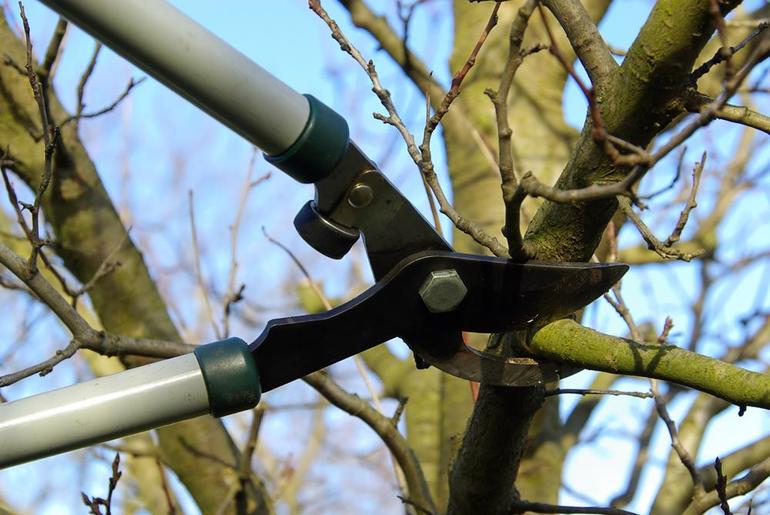
Content
General principles
Pruning is the partial or complete removal of branches and shoots, one of the types of courtship of fruit and ornamental trees and shrubs. This activity regulates growth, development and fruiting. However, there is another side of pruning - sanitary, which saves bushes and trees from branches that expose her health to high danger.
Even if the tree is old, you can safely trim it - it will beneficially affect its longevity. It should be noted that tree pruning takes place in autumn, spring and even in summer. However, autumn pruning is best done in those regions where winters are mild and warm. In a harsh climate zone, it is best to prune trees in the fall, so that immediately after pruning, frost does not destroy the bark in the places of cut, drying and “killing” the tree.
Different trees need different pruning, for example, some species are pruned once or twice a year, others - once every several years. Autumn pruning, like any type of agricultural activity, has its own characteristics that should be observed. Procedure Procedure:
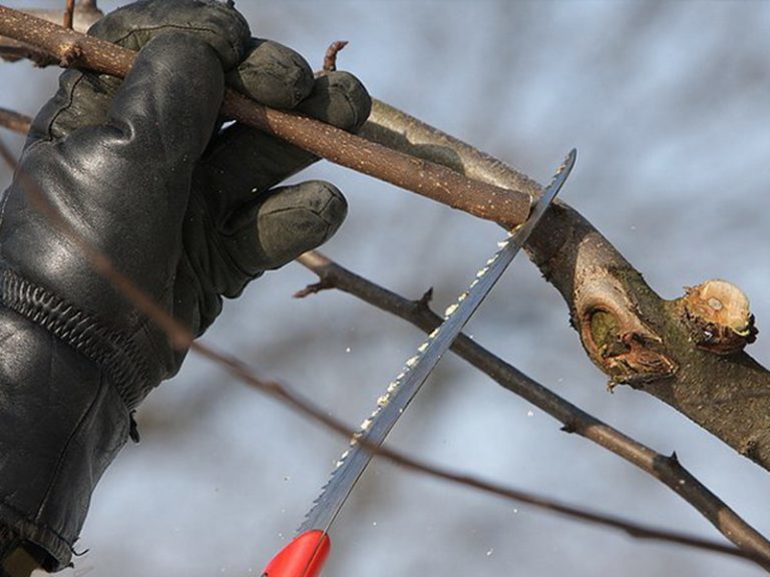
- Sick, damaged and attacked by pests branches are cut.
- Remove the tops and shoots.
- Then the tree is freed from shoots growing inward, at an acute angle and competing with each other.
- If the operation is anti-aging, then the old parts are sawn off.
- Places of cuts are necessarily treated with garden varieties or other means.
- All cut parts must be burned.
Young trees need pruning to form a crown. Wherein There are several types of such an operation:
- With a leading conductor.
- Cup-shaped.
- Change-leading.
An adult tree is pruned in a more intensive manner. Some parts are cut off completely, some are shortened. All this helps to increase yield and strengthen the crown. Autumn tree pruning scheme for beginners:
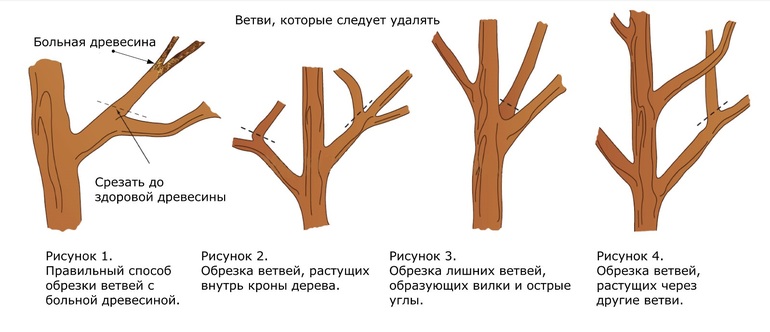
Techniques for pruning trees and shrubs in autumn and spring:
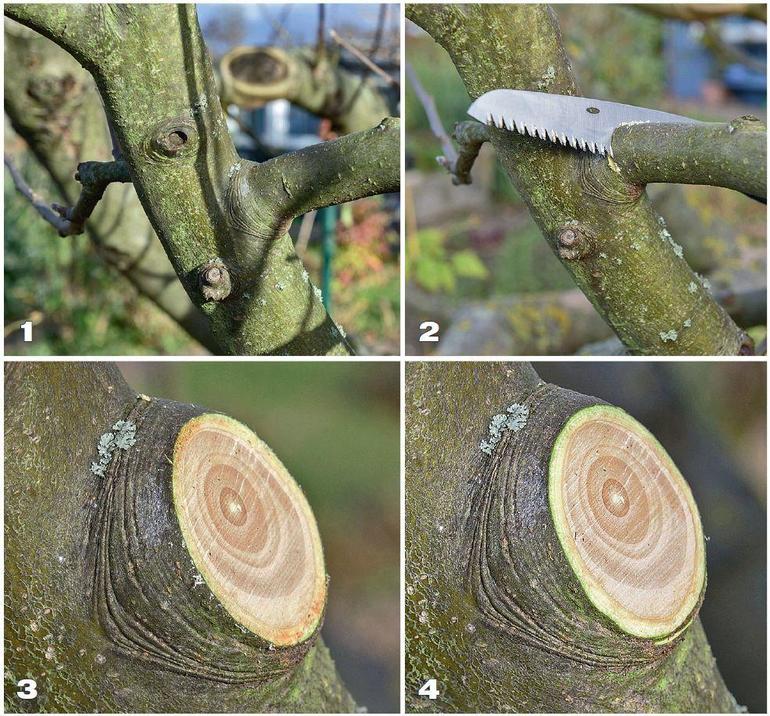
- Slice on the ring. This type of cut helps to direct the growth of the shoot in the right direction. On a one-year-old tree, a bud growing in the right direction is selected, and a branch is cut near it at an acute angle. It is worth checking that the stump is not too large - no more than 1.5−2 mm. A high stump can dry, and the kidney simply does not come to life in the spring.
- Ring slice. To remove the incorrectly growing branch, which takes resources from the tree, an annular cut is performed. Its essence is that the defective shoot is cut off almost at the very base, on a kind of annular influx.
The layer of the garden var, which is applied to the cut, should not be less than 4-5 mm. In addition to var, paints containing copper salts and artificial bark are actively used - a special composition that accelerates recovery.
Yield increase
Novice gardeners are often interested in how to increase the yield of garden trees. In this case, professionals noted that horizontal branches produce the greatest yield. In addition, autumn pruning is partially aimed at increasing fruiting.
During the procedure, it is not necessary to remove incorrectly growing frame branches, otherwise the harvest will not be for a long time. They can be stretched by fixing with a rope. This is not difficult: they pull the branch in the right direction with a rope, to the maximum possible angle so that it does not break, and fix it. After two weeks, the rope is untied.
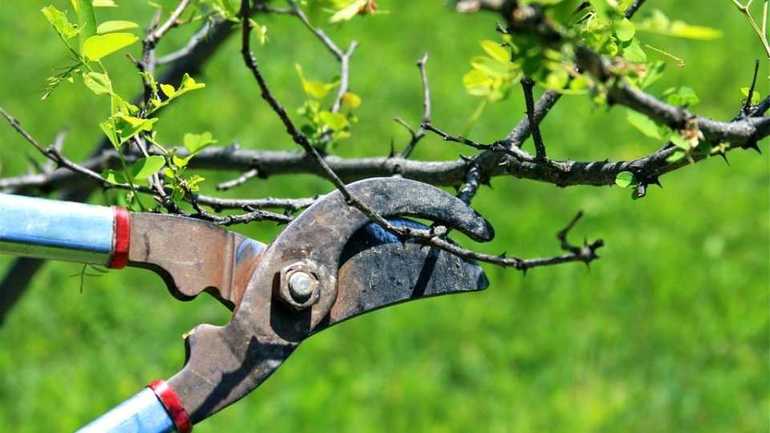
The operation is carried out with all the main branches that form the crown. Thus, by the next season, the crown will grow correctly, which will lead to an increase in yield.
Pruning apple tree
The apple tree is often cut in spring, less often in summer, if the crown is too thick and the branches lack sunlight, as well as in autumn. In the spring, cleaning is carried out after the winter, i.e., frozen branches are removed. This is done before the movement of juices.
As for the autumn, in November, trees are reorganized after all the leaves have fallen. This allows you to get rid of old, rotten and broken branches. And since the tree has already spawned and got rid of the leaves, then it should tolerate pruning calmly. Fruit tree pruning scheme in autumn:
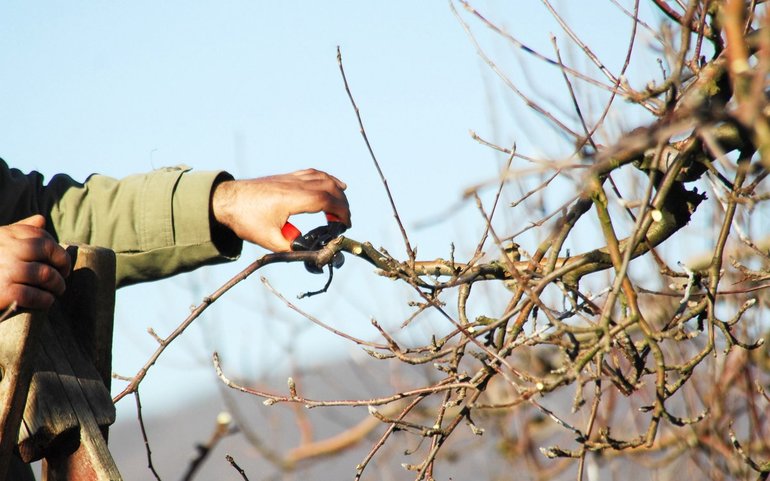
- The first to remove large broken and dried branches.
- Of those branches that grow too close to each other, you need to cut off the weakest.
- You should also rid the tree of branches that grow at an acute angle.
- All places with a cut should be treated with garden varnish or oil paint.
- Cropped branches cannot be stored near trees, it is better to burn them.
At about the age of 5 years, apple trees are pruned in medium intensive mode, cutting off strong branches by a third of the length. Powerful pruning is carried out only in case of severe thickening of the crown.
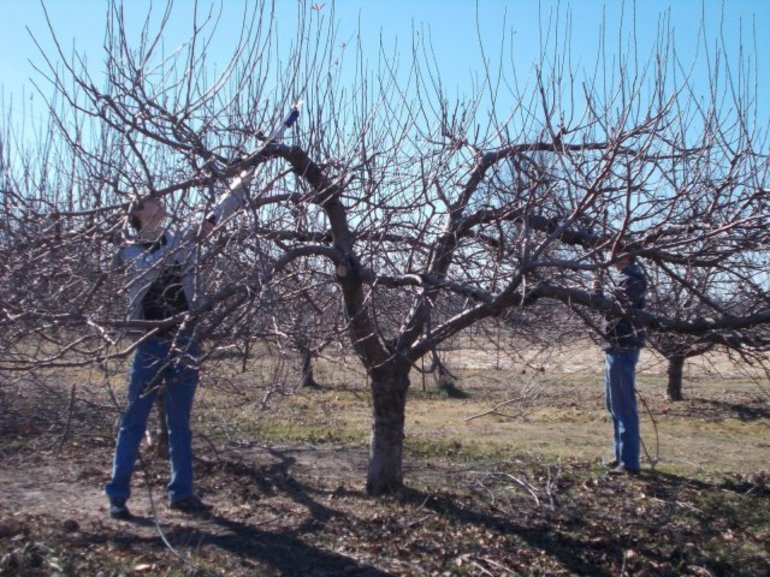
Old trees can be renewed: in the first year, a third of the old branches are sawed off, in the next two years, the remaining two-thirds are cut. All actions should be carried out using a hacksaw, after sharpening and disinfecting it.
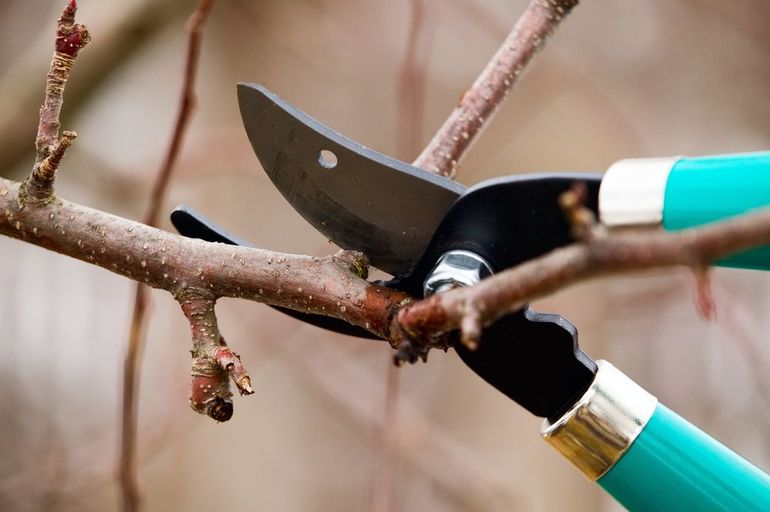 You may be interested in:
You may be interested in:Pruning trimming works on the principle: the more you cut, the more it grows. If you cut off most of the branches, then the remaining 4−5 buds next year form powerful shoots. If you cut a smaller part of the branches, then the remainder, approximately 6-7 shoots, will give another 6-7 new shoots next year.
When pruning, you should know that you can not saw off the central branch of the crown, since the crown will branch. To form a columnar crown, it is necessary to tie the crown of a seedling to a support, and form fruit bases from the side branches. If the fruit shoots grow too fast, they are cut into a ring so that they do not affect the growth of the main shoot.
How to process a pear
Inexperienced gardeners think that pear pruning no different from the same procedure on the apple tree, but this is not entirely true. You can do a comparative analysis and find the differences.
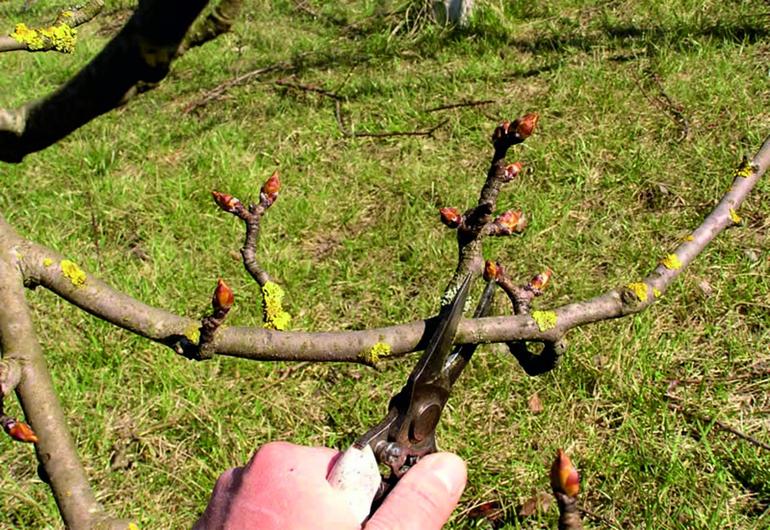
It is not recommended to cut a pear every year. In autumn, it is necessary to carry out a sanitary procedure, before the onset of frost. If the frosts hit unexpectedly, then the pruning is transferred to the next spring - in severe cold, the wounds do not have time to heal, the tree freezes and can die.
The optimum temperature for the operation is about 8 degrees centigrade. You should not do pruning in late autumn, September is the best option.Since it is easier to collect fruits from the pyramidal crown, this should be taken into account when forming it.
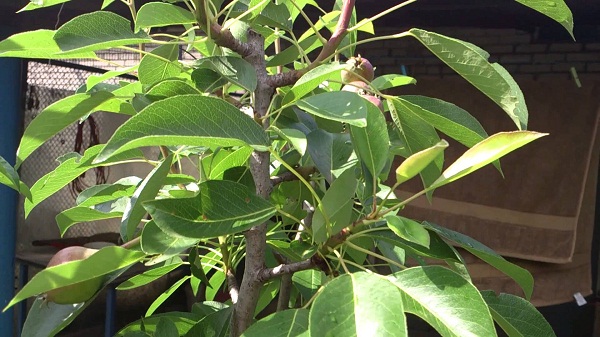 You may be interested in:
You may be interested in:Gardeners recommend forming a crown at the very beginning of the plant's life. This must be taken seriously, because it is at this time that the skeleton of the pear is created. An annual fruit plant needs to be cut at a height of 45−55 cm from the surface. In biennial specimens, 3-4 skeletal branches must be left, cut them at the same level, and remove the remaining shoots. In this case, the conductor should be cut 20 cm above the main branches.
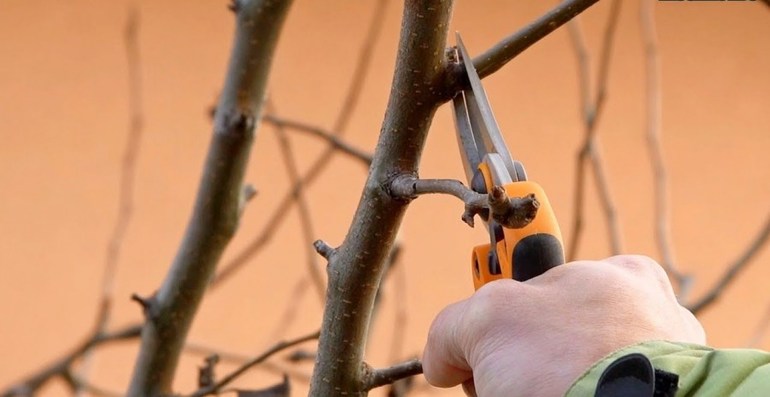
Autumn pruning of a pear is sanitary: remove branches that thicken the crown, old and diseased shoots. It will not be superfluous to trim the annual shoots and crown of the head if the tree grows too fast. After completing the procedures, you need to treat the wounds: grease the old branches immediately, and young ones only after a day.
Old trees can be rejuvenated by shortening their tops if they are in disrepair. If the pear was subjected to periodic processing, then you can not touch the upper branches, removing the old, dry, non-bearing and broken parts. The remaining shoots need to be slightly shortened, about a quarter. At the end of the operation, all sections should be greased with garden var or drying oil.
Work with plum
Plum, like many garden inhabitants, needs year-round maintenance, therefore it is cut at different times of the year. In the spring, frozen branches are sawed off, preparing the tree for the active period. In summer, if a rich harvest is given out, some of the branches that are about to break off from the load are removed.
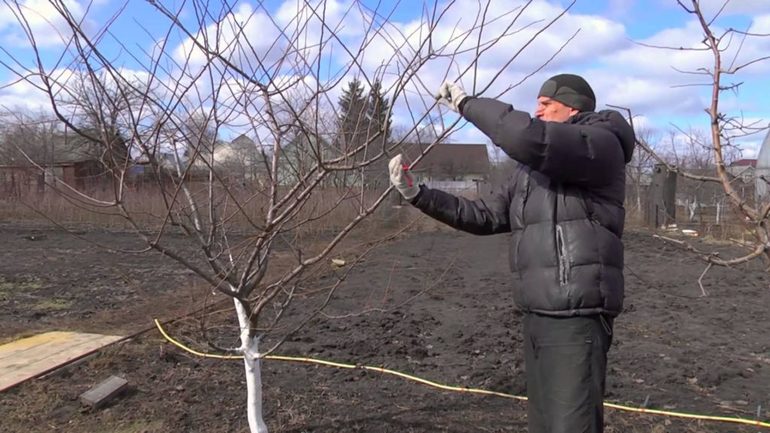
Autumn pruning is aimed at preparing the tree for winter and increasing productivity. After the fall of the leaf, branches that were infected by insects and diseases are cut from the plum. Also cut down the top, if the tree has grown above 2.5 m. Next, actively growing branches competing among themselves are cut down. Such shoots in spring can thicken the crown, preventing sunlight from penetrating through them.
Attention should be paid to the branches that remained over the winter, they are shortened by a third in young trees. Growing inward is removed completely. All cut shoots must be burned. It is not recommended to cut off an old plum in the fall, since the wounds heal for a long time, and simply can not stand the frost.
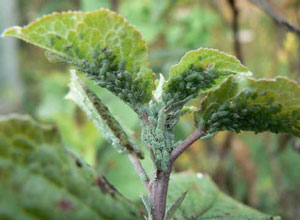 You may be interested in:
You may be interested in:Cherries
Cherry - a plant that does not need an annual procedure, but if such a need arose, then most often aboutcut in spring. In the fall, only sanitary operations are carried out. The exact time may vary by region. In the warm - this is October, in the colder - the month of September. Landmark, after which you can do pruning - dumping leaves. However, if frost is predicted in the near future, it is better not to take risks and cut the cherry in the spring.
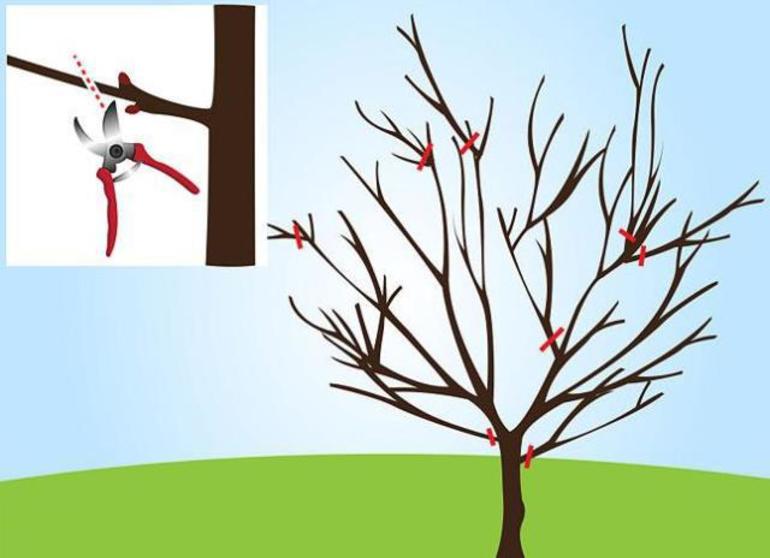
Concerning sweet cherries then pruning not much different from pruning cherries. However, you should know that intensive removal of branches in the fall reduces yield. You can experiment a little with the anti-aging procedure and trim in the fall.If the result is not satisfactory, then the next time it is better to do it in the spring.
Experienced gardeners recommend forming a crown of cherries in the form of a cone - the tree receives more light, and air circulates more actively between shoots. The conical shape is not the only one; you can still use the cup-shaped or tiered version.
Other garden plants
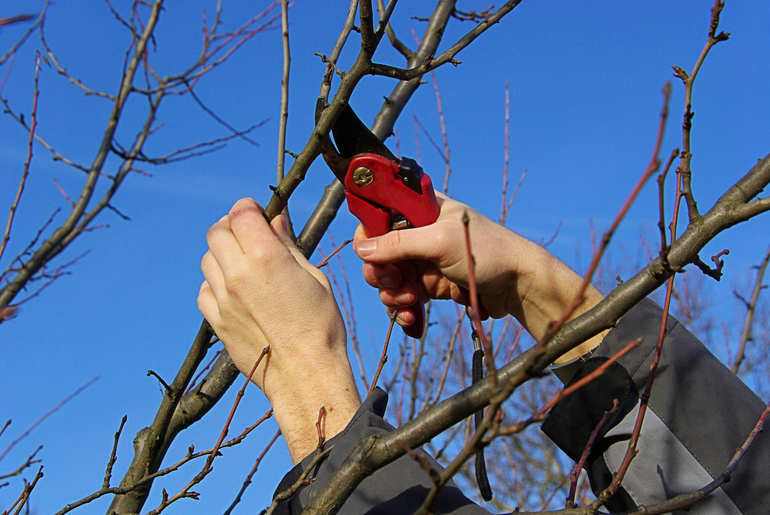
You can’t say exactly when it is better to prune the trees in the fall or spring. In general terms, it can be determined that in the fall they often carry out sanitary pruning, in the spring - shaping and restoring, and in the summer corrective. An apple tree and a pear calmly endure the removal of branches at any time of the year. The remaining garden dwellers more easily tolerate the spring procedure. But it all depends on the region in which the pruning is carried out.
As for the not very common garden ones - sea buckthorn, quince, viburnum, mulberry and others, then when autumn pruning is better not to risk it and remove only the most necessary.

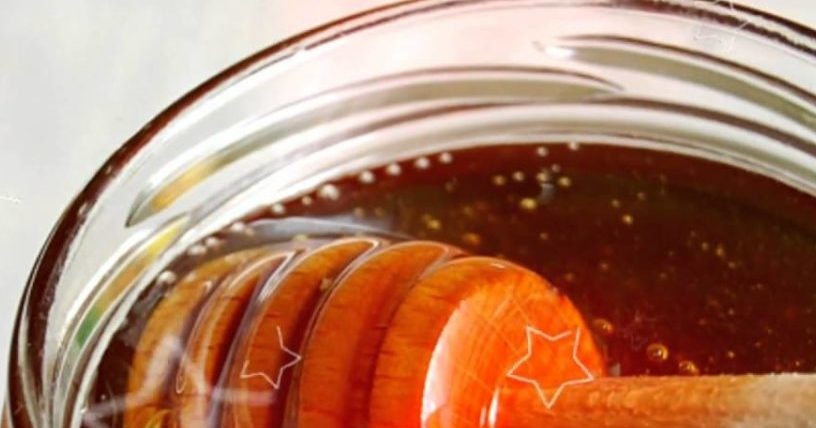
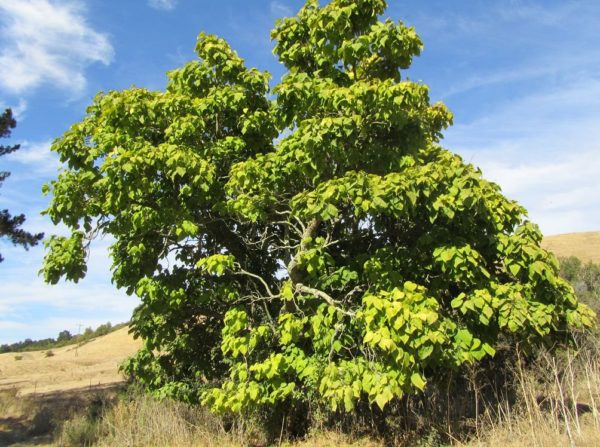
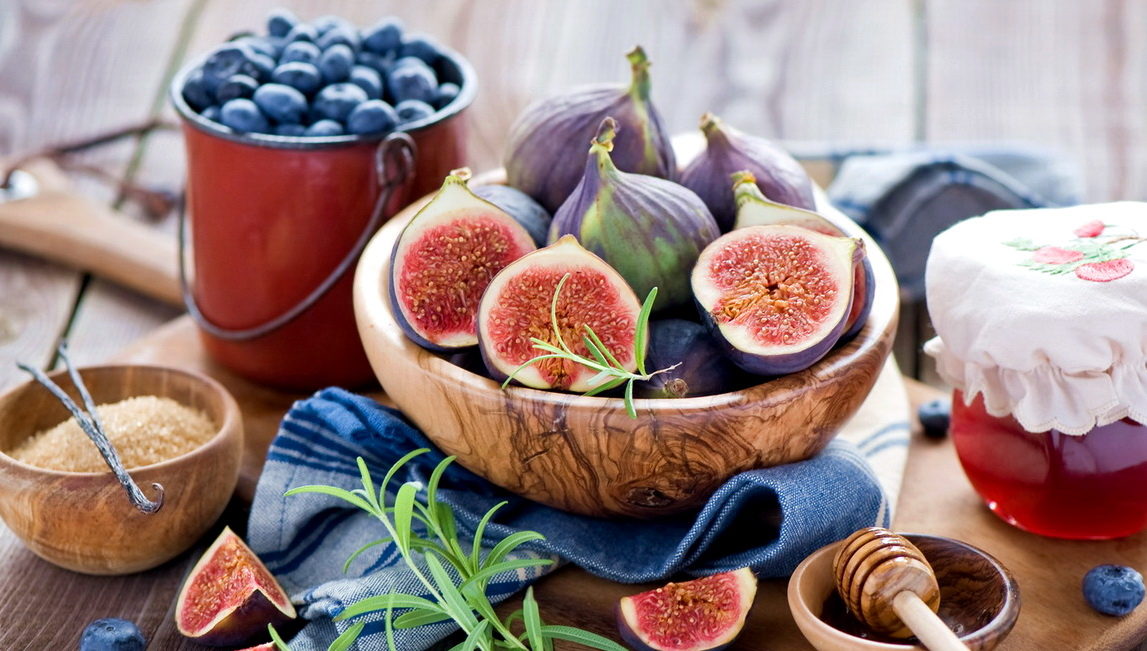
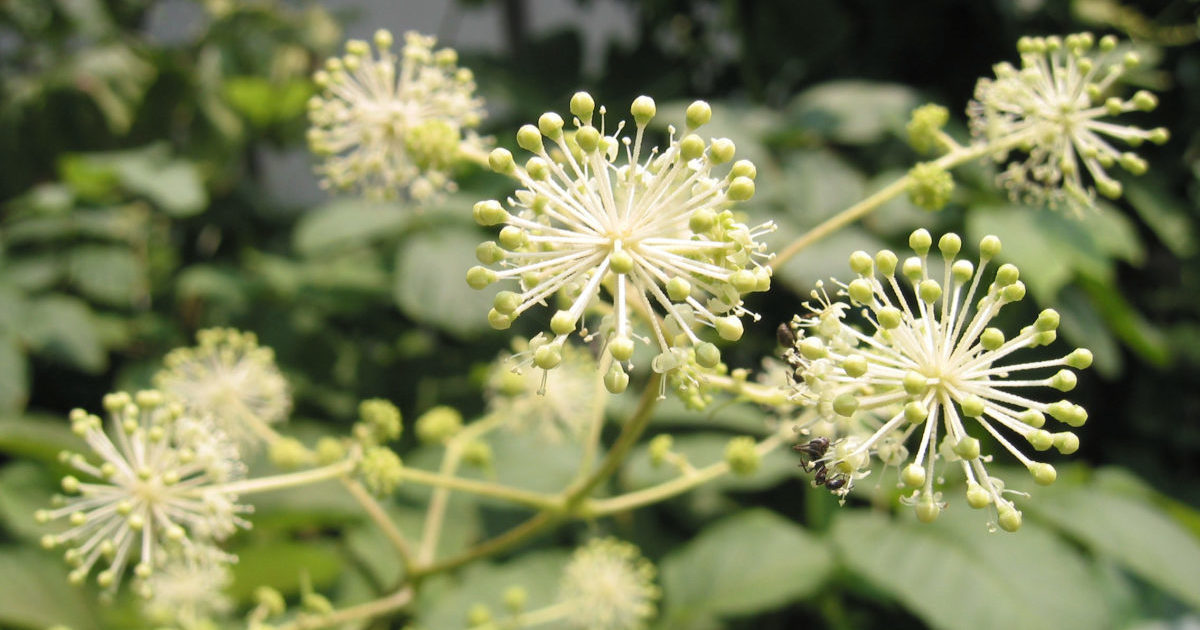 Aralia Manchurian - medicinal properties and contraindications, the use of tinctures in bodybuilding
Aralia Manchurian - medicinal properties and contraindications, the use of tinctures in bodybuilding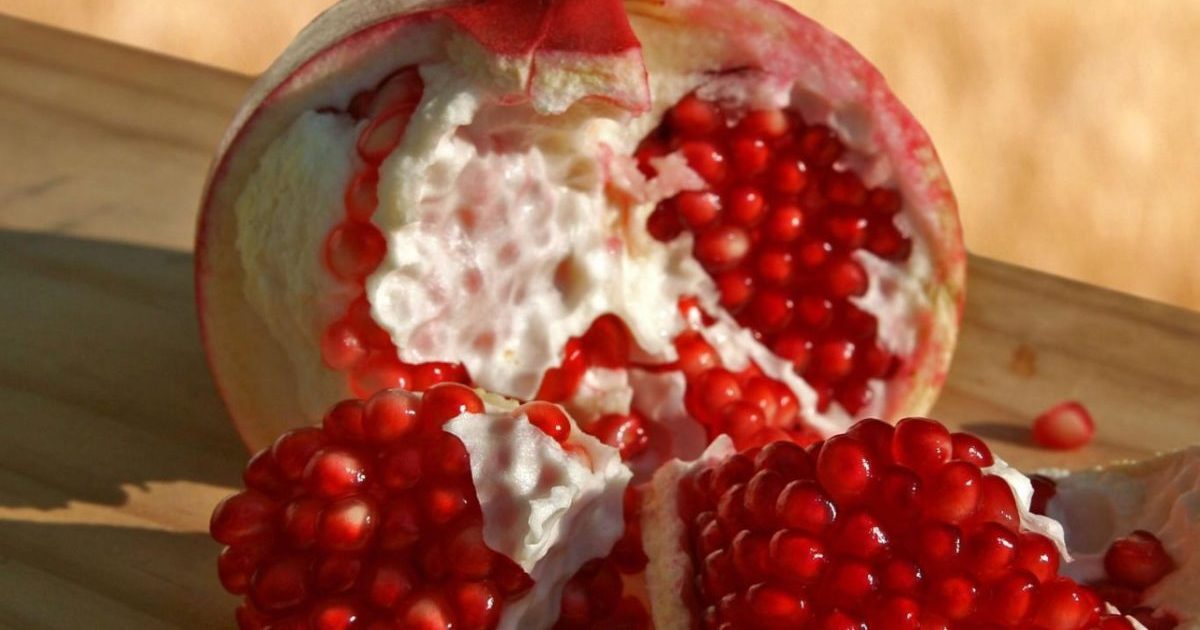 Seedless pomegranate - cutaway appearance, benefits and harms
Seedless pomegranate - cutaway appearance, benefits and harms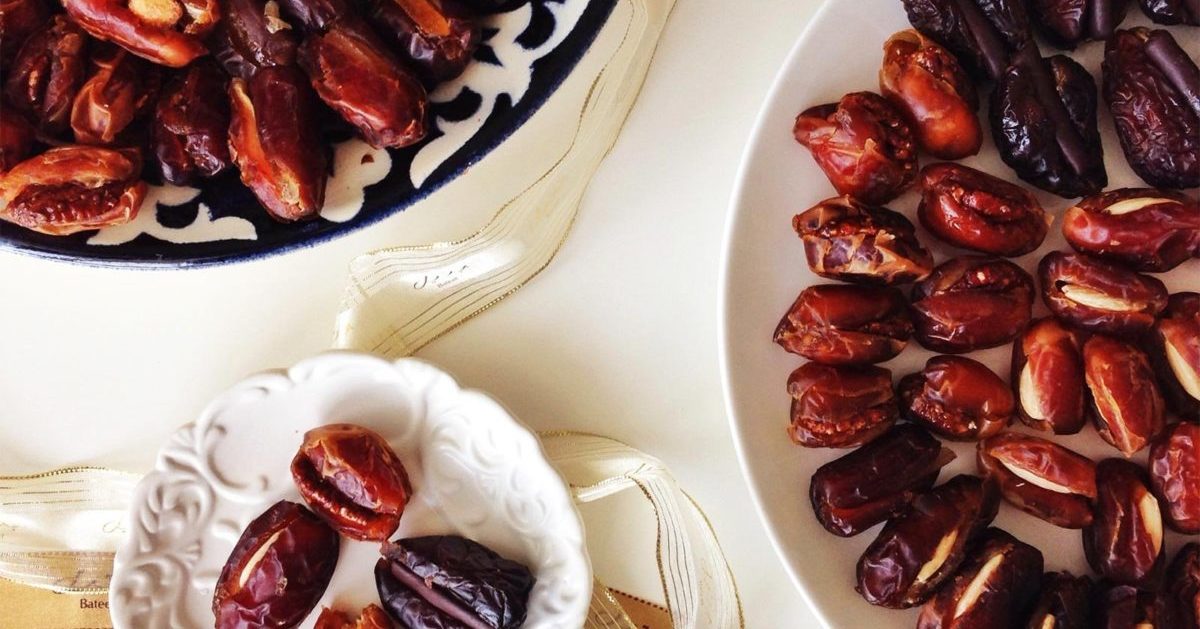 Dates - the benefits and harm to the body, how much you need to eat, properties and calorie content
Dates - the benefits and harm to the body, how much you need to eat, properties and calorie content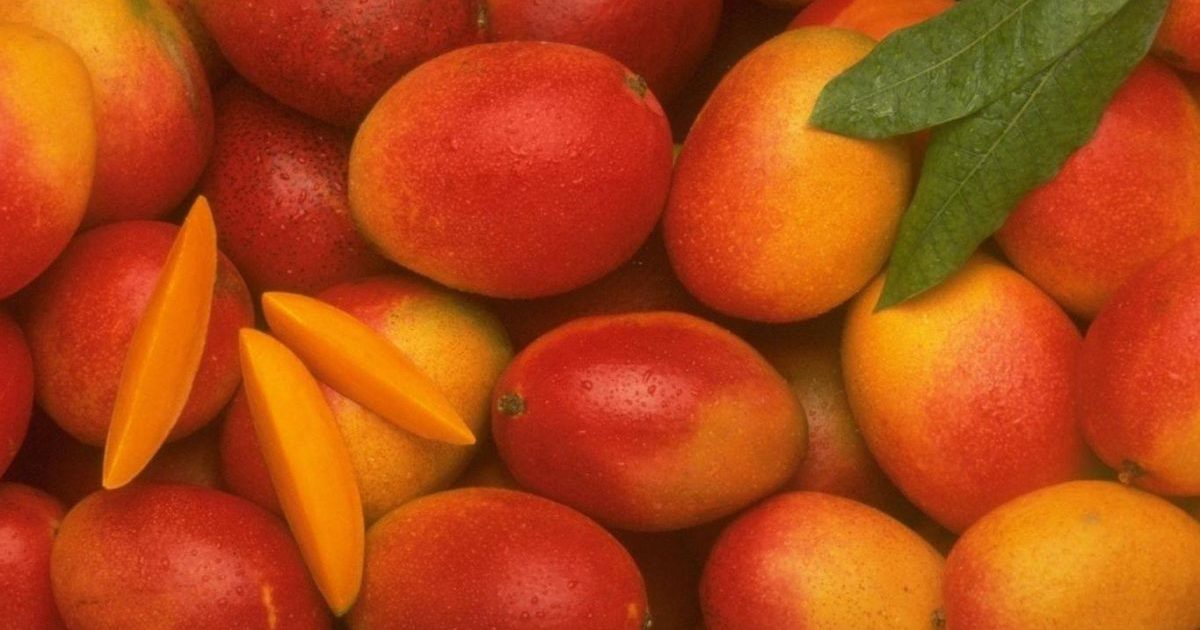 The benefits and harms of mango for the body of women and men - how to eat it?
The benefits and harms of mango for the body of women and men - how to eat it?